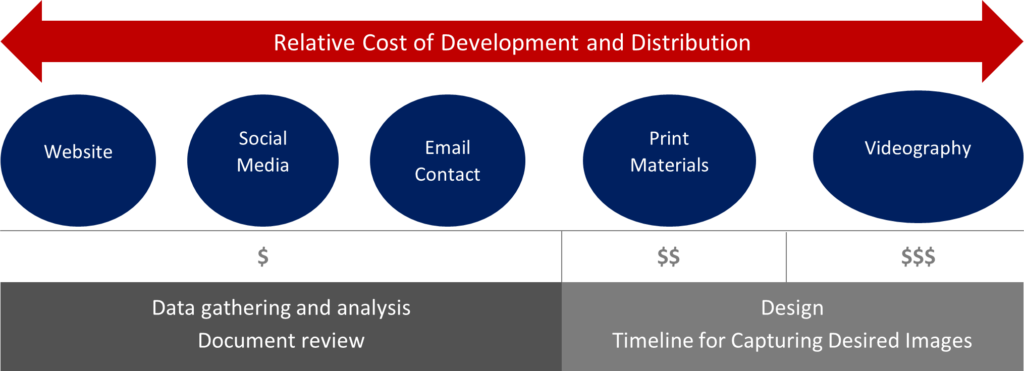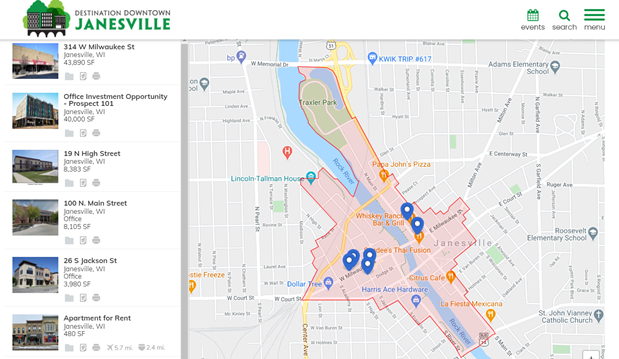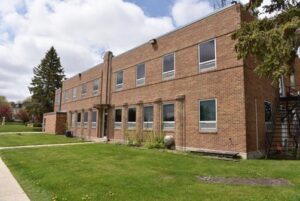My daughter was working on a school assignment that was an introduction to who she is and where she comes from. One of the questions was as follows: Describe the ugliest place in your hometown. While I was busy mentally scrolling through a list of vacant storefronts my husband came up with one truly ugly place that sits on a gateway to our community. Its history includes being a former gas station, custard shop, and diner, but it has been vacant for years. Weeds grow through cracked concrete. The awning is in disrepair. The interior drywall is torn from the removal of large signs. It is for sale. So why hasn’t it been improved or sold? And why isn’t the city doing something about it?
THE REACTIVE APPROACH
Code Enforcement
Generally, the fire marshal and/or building inspector must inspect commercial properties annually for code safety. For vacant storefronts, little can be done from a code enforcement perspective unless there are violations that impact the safety of the public. However, the community can enact a vacant building ordinance that requires property owners to register their vacant buildings with the city. For instance, the City of Janesville in Janesville, WI created a new staff position to manage such a program. It is partially financed through the collected fees and the general budget. Its goals are to:
- Preserve and promote public health, safety, prosperity, and general welfare
- Abate and prevent public and private nuisances and potential fire hazards
- Promote neighborhood stability and occupancy by preserving the condition and appearance of properties
- Maintain property values and assessments
Land Banking
Alternatively, a community might want to pursue acquiring vacant storefronts for potential public use or land assembly for a future redevelopment project. Considerations for this strategy include acquisition costs, potential liabilities, forfeited tax revenue, and maintenance costs. Plans also need to be made to transition the properties back to private ownership. This will allow them to be contributing properties once again.
THE PROACTIVE APPROACH
Some proactive strategies for reducing the number of vacant storefronts and the length of time spaces are vacant include:
- Executing a Business Retention and Expansion Program
- Community marketing for business attraction and real estate development
- Public education of available resources for property maintenance and improvements
- Creating a pop-up program (see last month’s blog, Pop-Up Retail)
Business Retention & Expansion (BRE) Program
First, a BRE program develops relationships with local firms to understand their needs, especially those at risk of closing or relocating elsewhere. Through this ongoing relationship-building practice, local issues can be identified and addressed. Particularly those that detract from a healthy business climate. This enables local businesses to prosper and grow. It may entail connecting them with a variety of services, such as technical assistance, workforce development, financing, building new markets, and/or updating the zoning and sign codes.
It’s important to note that the value added by the ED Practitioner’s BRE program does not generally occur in the initial meeting. Consistency over time, disseminating relevant information and orchestrating events is where the value lies. Additionally, work with your local real estate brokers to obtain updates on available properties. Then when your local business contacts you with their real estate needs, you’ll have a selection of available properties for them to consider.
Community Marketing
Second, the world has become much more visual in the past decade. Marketing materials must visually represent the community and plans for the future. Graphic representations of data, trends and future projections must be easy to understand. The following are great examples by media type:
Website: Arvada Economic Development Association
Social Media: City of Madison Instagram
Videography: Experience Janesville

Maps: Essential to this effort is the marketing of available commercial properties. Some utility companies will also help market properties. Interactive maps are a bonus!

Public Education
Third, in spite of our best efforts to make information readily available to the public in a variety of formats and presentations, the modern human being is easily distracted and forgetful. Downtown organizations and chambers should establish a routine meeting with city staff to present at a member meeting on how to address property maintenance issues and available assistance. The ED Practitioner can also periodically submit an editorial to the local newspaper highlighting why property maintenance is a public issue, how to resolve it and where to find available resources.
Entrepreneurship and Small Business Development
Fourth, small business owners are vital to your community and have a stake in its growth. Connect potential local entrepreneurs and existing small business owners with business development resources with your regional partners. A townhall-style meeting, a spotlight on the website, or article in the local paper are valuable introductions to these resources, but consider developing a program for increased engagement and potential business development such as business plan challenges or pop-up store programs.
Capacity
Finally, all of these strategies depend on the budget, staff capacity, risk tolerance, political environment, and relationship with other EDOs and real estate professionals. Pick the low-hanging fruit and make a plan for how your community can move towards expanding your capacity to reach your desired goals. And always ask your current retailers what type of stores or actual stores they think would be a bonus to the community. Then, go get them!
Cover Image: Formerly the site of Michael’s Frozen Custard and then Treads Bar & Grill for sale in Verona, WI. (Source: LoopNet)






